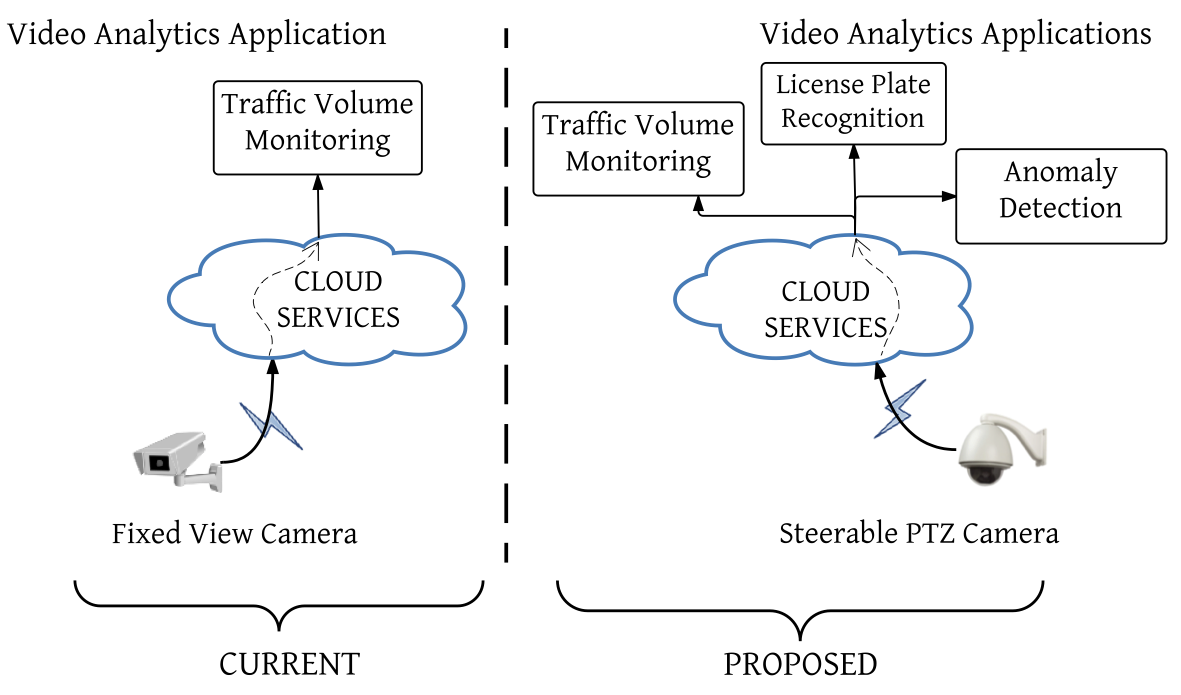Panoptes: Infrastructure Camera Control
Panoptes is a novel view virtualization system for steerable infrastructure cameras. Infrastructure cameras are often installed with a specific application in mind and their view is carefully adjusted to fit this application. Supporting multiple simultaneous analytics applications on the same camera often creates challenges because their view and image requirements tend to differ. Panoptes breaks this one-to-one binding between camera and the application by leveraging the steerable nature of many of these cameras. We also designed a mobility-aware scheduling algorithm that anticipates object mobility and network/steering latency to maximize the number of simultaneous applications served, while minimizing the number of relevant events missed.

LookUp: Enabling Pedestrian Safety Services via Shoe Sensing
LookUp is a novel shoe sensor based approach for sub-meter location classification in noisy outdoor urban environments. Pedestrians are most likely at risk when crossing the street. LookUp estimates pedestrian risk by sensing if a pedestrian is walking safely on the sidewalk or transitioned into the street. Unlike earlier approaches of dead reckoning and step counting, it can measure the inclination of the ground a person is walking on and detect roadway features such as ramps and curbs, that precisely indicate sidewalk-street transitions. These detections can be used to warn distracted pedestrians, or oncoming vehicles of the pedestrian's presence in-street. LookUp was exhaustively evaluated in the high-clutter Manhattan environment.
-
In-vehicle context sensing for driver assistance
Vehicles process a rich set of sensor information, part of which is exposed and can be efficiently used for vehicular context detection. We undertook a preliminary understanding of the design space of in-vehicular context sensing, as compared to smartphone-based sensing. Our primary finding is that neither car-sensing nor phone-sensing alone is likely to satisfy the needs of context sensing applications alone, and that a hybrid-sensing approach, in which car sensors are paired with phone sensors will be necessary to compute vehicular context.
Smartphone sensing for pedestrian risk detection
We explored smartphone-based GPS sensing for pedestrian safety applications. Through extensive tests conducted in rural, suburban and metropolitan environments, we demonstrate that GPS based techniques perform well in rural and suburban scenarios. However, existing positioning technologies are a bottleneck to precise pedestrian positioning in dense urban environments. GPS cannot distinguish pedestrians in the street, and therefore at higher risk, from pedestrians safely walking on the sidewalk.
-
Detection of diabetic retinopathy using smartphones
Diabetic retinopathy is one of the leading causes of blindness worldwide. We propose a low cost postable smartphone-based decision support system for initial screening of diabetic retinopathy using image analysis and machine learning techniques. We attach a smartphone to a direct handheld ophthalmoscope, where the phone captures fundus images as seen through the opthalmoscope. Through this mobile eye-examination system, we envision making the early screening of diabetic retinopathy accessible, especially where dedicated ophthalmology centers are expensive.
